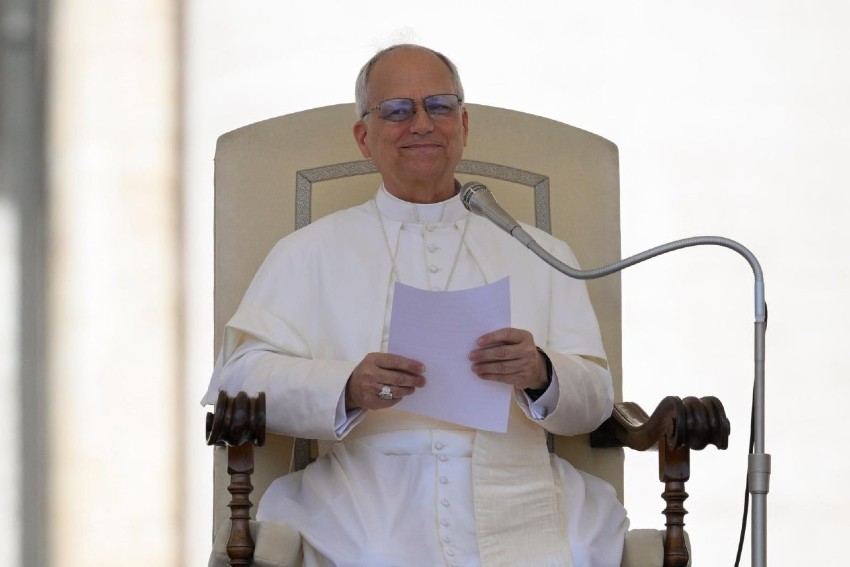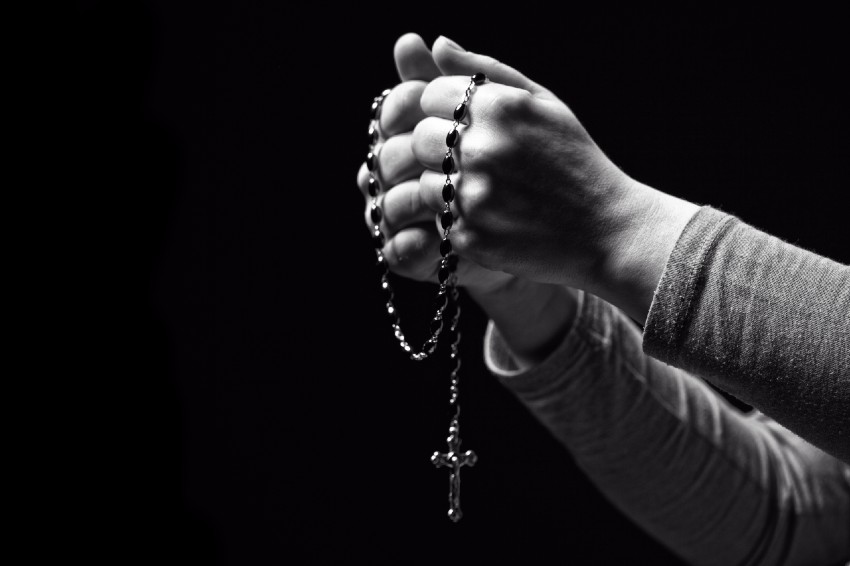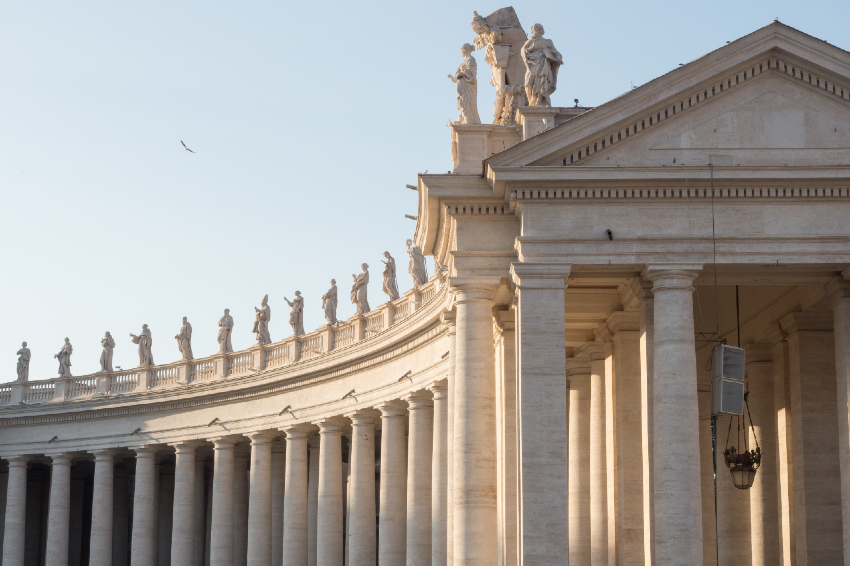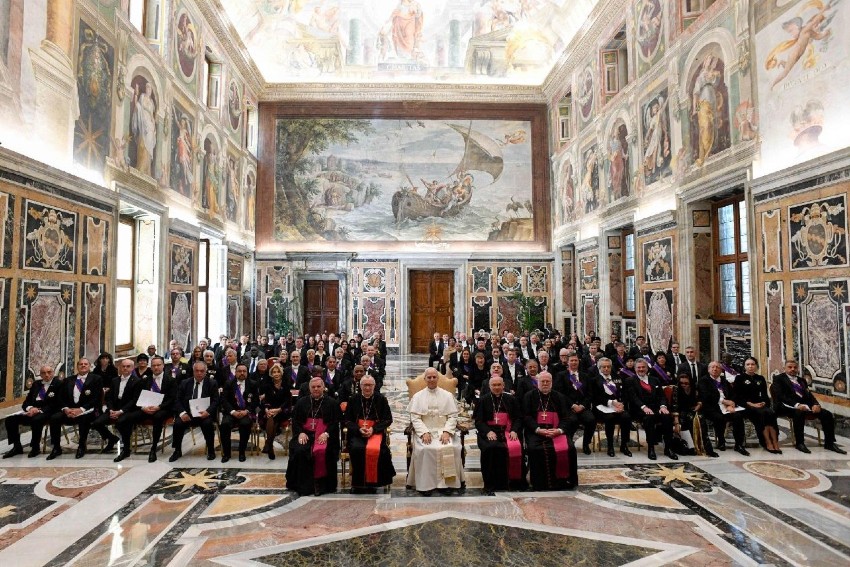The Way? Christocentrism
We continue our quest for Jesus, following in Benedict’s footsteps
By Robert Moynihan
The Pope Is Writing a Third Book about Jesus
Pope Benedict XVI is spending his summer vacation at Castel Gandolfo, where he will remain until October (except for his trip to Scotland and England September 16-19), writing about Jesus.
This is part of the reason that I wrote a few days ago that I would set out on a “quest” for Jesus.
I was, in a sense, taking Pope Benedict as an intellectual and spiritual model. If he is writing about Jesus, then so would I, by reading him, and reporting on what he says.
In fact, if I am covering the Vatican, and Benedict is “inside the Vatican,” at the “heart” of the Vatican, and he is focusing a good deal of his intellectual energy on writing about Jesus, then it is a professional requirement to follow him in this endeavor. This is, arguably, “the” story of this pontificate.
But it is also the “story” of every pontificate. The Church is always “Christocentric” — centered on Christ.
And, indeed, the world is “Christocentric” — though it does not know it, or has forgotten it.
This means that everything that happens in the world is somehow related to, and able to be understood better in the light of, Christ.
And this can justify writing about Jesus, and his Transfiguration, and what that mysterious event meant, even in connection with a modern historical event, like the dropping of the first atomic bomb on Hiroshima, as I did in my letter of August 6, which was the Feast of the Transfiguration and also the 65th anniversary of the 1945 Hiroshima bombing.
And I do not regret making that effort, though I have received a large number of letters critical of what I wrote, because I believe what I wrote was important — in part also because there is increasing pressure in our own time for the use, once again, of nuclear weapons, a use which will be justified with many and various reasons.
I wanted to describe, briefly, what happened when that weapon was used, without going deeply into the reasons for that decision, out of a hope — perhaps a foolish hope — that my poor words might in some way contribute to building a “climate of opinion” in which the decision to resort to the use of nuclear weapons might be seen as more tragic, and more to be be avoided, and so not taken. That was part of my purpose.
And I believe it is a purpose rooted in the Christian faith, and in the Christian teaching on the dignity of man, and on the need for us to try to protect that dignity, even in the midst of the general slaughter, even of civilians, that modern war can become.
Pope Benedict has said that he believes that the greatest threat to the Christian faith, and therefore to the proclamation of the Gospel in our time, and in the future, is the loss of belief in the historical reliability of the Christian “claim” — that Jesus actually was born, lived, taught in parables, performed certain miracles, was crucified, died and buried, and then rose from the dead, and that this changed, and changes, everything.
And that is why Benedict, in an unprecedented way for a Pope, has taken to writing books — and not encyclicals — on Jesus.
His is truly a “Christocentric” pontificate.
And that is also why, even though he has a crushing round of ceremonial and administrative duties, ranging from presiding at major liturgies to receiving political leaders from around the world, Benedict believes that one of the most important works of his papacy is to write books about Jesus: he has published one book on Jesus (Jesus of Nazareth), completed a second book (which will be published in Lent, 2011, in about six months time), and is right now, at this very moment, working on a third book.
In fact, he is working on this third book rather than writing the third encyclical in his trilogy on love (Deus Caritas Est, “God Is Love”), hope (Spe Salvi, “Saved by Hope”), and faith. It is not clear now when, or whether, he will write the encyclical on faith.
So this trilogy about Jesus is arguably the central intellectual work of his pontificate.
And this is essentially what the respected Vatican analyst Sandro Magister also wrote two days ago on precisely this subject.
“Instead of a new encyclical, Benedict XVI is writing the third volume of his trilogy on Jesus.,” Magister wrote. “With the Transfiguration on Tabor as its focal point.”
“The Transfiguration has a central place in the entire work”
Excerpts from Sandro Magister’s piece, which may be found at: https://chiesa.espresso.repubblica.it/articolo/1344416?eng=y
by Sandro Magister
ROME, August 10, 2010 – (…) After the encyclicals on charity and hope, it is said that Benedict XVI is writing an encyclical on the other theological virtue, faith. In reality, that’s not true. In Castel Gandolfo – where he went in early July, and will stay until October – the Pope is instead writing the third part of his book Jesus of Nazareth, dedicated to the infancy narratives in the Gospels.
The first of the three volumes was released in 2007. The second has already been brought to press, and will be released simultaneously in multiple languages during Lent of 2011.
It is important to emphasize that the Transfiguration of Jesus has a central place in the entire work. It is the endpoint for the first volume, and the starting point for the second, which is centered on the passion, death, and resurrection of Jesus.
In the Transfiguration, in fact – Benedict XVI wrote in the first volume – “Jesus’ divinity belongs with the cross.” Jesus speaks with Moses and Elijah about the “necessity” of his passion. That mystery “which God predetermined before the ages” (1 Corinthians 2:7) is revealed in the crucified Christ.
(…)
In addition to being the center of the evangelical narrative, therefore, the Transfiguration is also necessarily the focal point of any form of the theology that intends to explore the mystery of Christ.
And this is what was explained – a few days before the feast of the Transfiguration, and again in L’Osservatore Romano – by the theologian Inos Biffi in the masterful article reproduced below.
Monsignor Inos Biffi teaches in the theological faculties of Milan and Lugano. He is a specialist in medieval theology and has written the outlines for a few of Benedict XVI’s Wednesday catecheses dedicated to the most representative figures of the Church of that period. His “opera omnia” is being published by Jaca Book.
In an era when new theologies are popping up to proclaim immodestly that they are refounding theological scholarship “ex novo” by bringing it into step with the times, the article by Inos Biffi shows how to recognize an authentic Christian theology.
(Note: The article by Inos Biffi was published in the Osservatore Romano on July 27, 2010, two weeks ago. It reveals the type of “Christocentric” thinking that is emerging in response to Benedict’s example and leadership in this matter. Here are excerpts from Biffi’s piece, which Magister prints in its entirety.)
from the L’Osservatore Romano of July 27, 2010
AN INFALLIBLE METHOD FOR RENEWING THEOLOGY
by Inos Biffi
If the Christian mystery stands at the origin of theology, and this can be defined as “understanding of the faith,” it is unthinkable that at any point in time remaking it from scratch can be contemplated. In the diversity of the times, it is nourished by an uninterrupted tradition of content and also of language, which does not admit drastic and revolutionary discontinuities, on pain of losing its identity. It is permissible at least to harbor some perplexity before a theology convinced that it is presenting unusual and singular theological doctrines, never before taught.
Nevertheless, this does not doom theology to pure repetition. The history of theology itself shows how much, without breaking continuity, it has been variously and profoundly renewed: but not by somehow obscuring or ignoring the mystery; on the contrary, by allowing it to emerge with greater power and consistency.
Theology does not let itself be unsettled and influenced by the myth of becoming and progress, aware that it was born and is continually reborn from the inexhaustible and unchangeable resources of divine revelation, which is complete and does not wear out, from communion with the Word of God, ancient and always new…
Here, however, we are not interested in illustrating the relationship between philosophy and Christian theology, but in indicating the decision through which theology could and should receive a profound renewal or new arrangement…
This way is Christocentrism.
Truly, this is by no means a novelty. Christian theology has always had Jesus Christ at its center; it was born and developed from the event that is him.
But perhaps this original centrality requires a more rigorous, more consistent, and more complete translation. Above all beginning with the very definition of Christocentrism.
This does not signify only the excellence of Christ with respect to all the rest, but his predestination to be the unconditional reason for all that which God has called and calls into existence.
But other indispensable and essential clarifications are required. When one speaks of Christocentrism, one intends to affirm not only the primacy of the Word, but also the primacy or “precedence” in God’s plan of the incarnate Word, who died and was raised, through whom, in whom, and in view of whom “were created all things in heaven and on earth, the visible and the invisible” (Colossians 1:15-17)…
The “Preeminent over all things” (Colossians 1:18) is, precisely, the glorified Crucified One, who comes before everything and from whom everything departs. It is as if to say that Jesus the redeemer, with the grace of his forgiveness, is the ontological foundation and the historical motive of all things (cf. Colossians 1:17), the Object of God’s eternal “purpose”…
But if Jesus risen from the dead is the Predestined One, this means the figure of humanity originally conceived and “preferred” by God is the glorified humanity of the Son, the achievement to which all of history is oriented.
In it, all humanity finds its rationale and model: all men are predestined, created “in grace,” or “predestined to be conformed to the image of his Son, so that he might be the firstborn among many brothers” (Romans 8:29).
We can define everything that we have described in the words of Paul: “the mystery of God that is Christ” (Colossians 2:2), or more precisely: “the wise mystery of God” that is “Christ crucified” (cf. 1 Corinthians 1:21,23).
So then, the task of theology is the exploration of this mystery. Those who dedicate themselves to it have the mission of “speaking God’s wisdom, mysterious, hidden, which God predetermined before the ages” (1 Corinthians 2:7).
It is on this realism that Christian theology is built, with no interest in watering itself down in the world of hypothetical divine plans or designs. Only God knows what he could have done. Everything has been created in the grace of Jesus crucified and risen…
In this sense, Christian theology is originally Christic: Christ… is the Object that is to be understood, as the concrete and historical “narration” of the plan (cf. John 1:18). He is the dimension that Christology must take on.
But Christ does not stop at himself: he is the Son, and thus he refers to the Father, whom no one has seen and of whom he is the epiphany, and he is the attestation of the Spirit. In him is found the Trinity, which reveals itself as the creating and merciful Trinity, which stands at the origin of an order intended as an initiative of mercy.
This is the order that the theologian is called to study, which in particular concerns man…
In particular, Christ unveils for us a God who, in his merciful love, gives the Son, predetermined as forgiveness for the sin of man, who in this way finds his advantage not in coming into the world, but in being redeemed. As Saint Ambrose writes, “Non prodesset nasci, nisi redimi profuisset” (Expositio evangelii secundum Lucam, II, 41-42).
Sacred doctrine, then, deals with anthropology, meaning man as existing solely as disposed in the grace and glory of the Cross: a grace and a glory at work in the sacraments, which Thomas Aquinas sees entirely suspended in the “energy of the passion of Christ” (Summa Theologiae, III, 62, 5, c).
So it is easy to see what ecclesiology deals with: precisely with the humanity that emerges from the Passover of Christ and finds itself configured and intimately associated with the Lord risen from the dead.
As for eschatology, this is the exploration of the glory and therefore of the achievement of the Crucified One: a glory that transcends and attracts history and is the end for which man and together with him all things were created and desired from eternity.
If it is true that Christian theology has always done this, I would in any case maintain that is is possible, even necessary, to refocus this in an even more consistent and profound way on Christocentrism. It is only from here that a strong, admirable impulse of renewal could come, which would be sought in vain elsewhere.
The Way Forward
And so the way forward is Christocentric: centering everything on Christ. Therefore, whether we debate the recent judicial decision in California to strike down the ban there on homosexual marriage, or study and discuss the “Theology of the Body,” or economic issues, or issues of war and peace, or liturgical issues, the key, always, is Christ.
And this means, that we need to read carefully what the Pope has said about who Jesus was, and is.
And so, to get on with the quest…
(to be continued)
Brief note: If you would like to travel with us for several days in Italy and Vatican City during the next year, we are still taking requests for our Fall 2010 and Spring 2011 pilgrimages. If you would like information about these trips, email us at: pilgrimage@insidethevatican.com “He that takes truth for his guide, and duty for his end, may safely trust to God’s providence to lead him aright.” —Blaise Pascal (French mathematician, philosopher, physicist and writer, 1623-1662)Best-Seller: A Talk by Dr. Robert Moynihan about the “Old Mass” on CDUnexpectedly, this little talk has become a minor “best-seller.”
We have now produced more than 5,000 of these CDs, and they are still running out every few days.It is called: “The Motu Proprio: Why the Latin Mass? Why Now?”In this talk, Dr. Moynihan gives a 2,000-year history of the Mass in 60 minutes which is clear and easy to understand. The talk covers questions like:
— Does the motu proprio overcome some of the liturgical confusion since Vatican II?
— Who was Annibale Bugnini?— The mind of Pope Benedict: How can the Church restore the sense of the presence of God in the liturgy?To subscribe to the print edition of Inside the Vatican, click hereThe newsflash is free, but there are costs associated with producing it. To support this writing, you may call our toll-free number in the USA, 1-800-789-9494, or click here“Inside the Vatican is a magazine I read cover to cover. I find it balanced and informative. I especially appreciate its coverage of art and architecture. It is not only an important magazine, it is also a beautiful one.” —Prof. Mary Ann Glendon, Harvard University Law School, former United States Ambassador to the Holy See






Facebook Comments